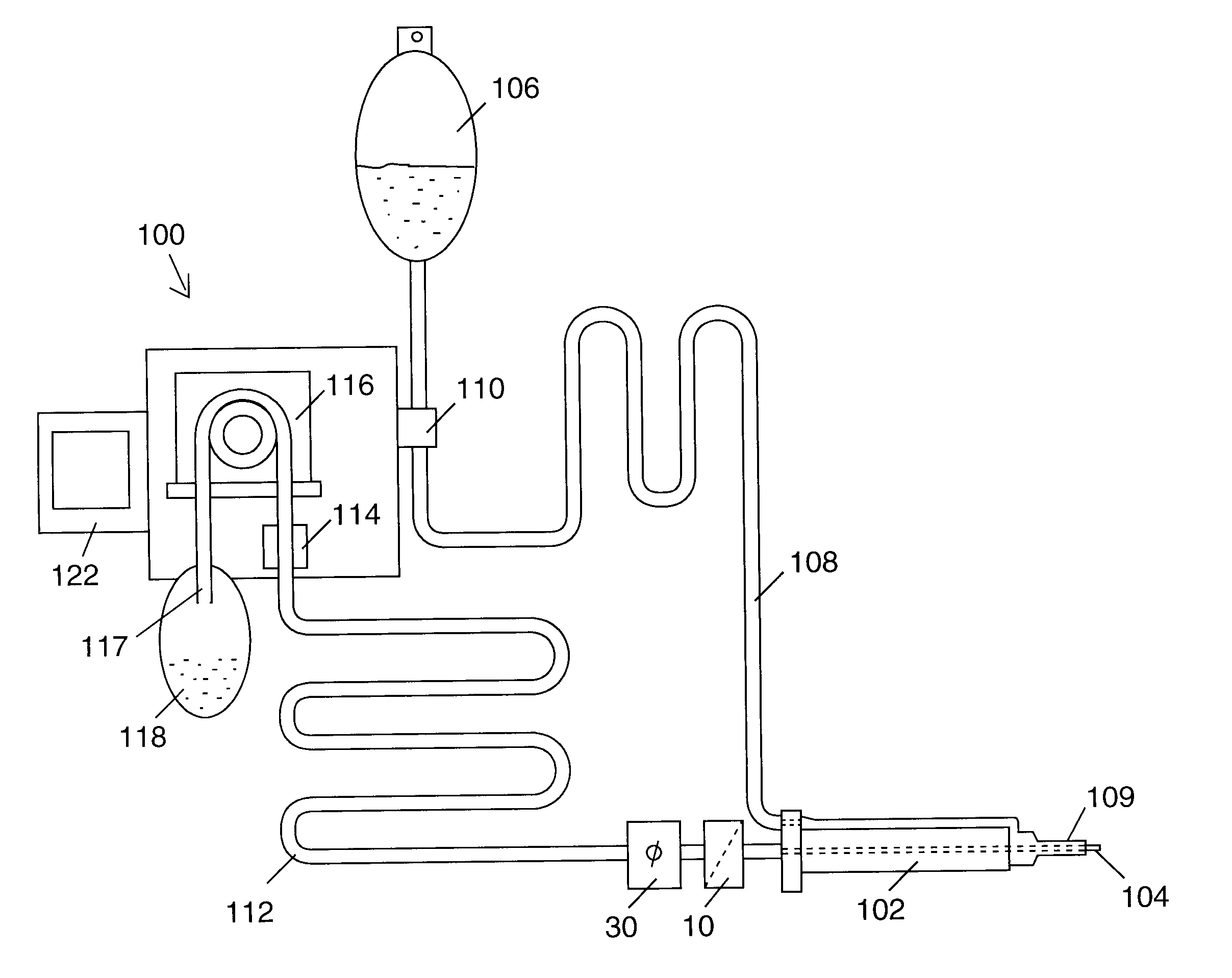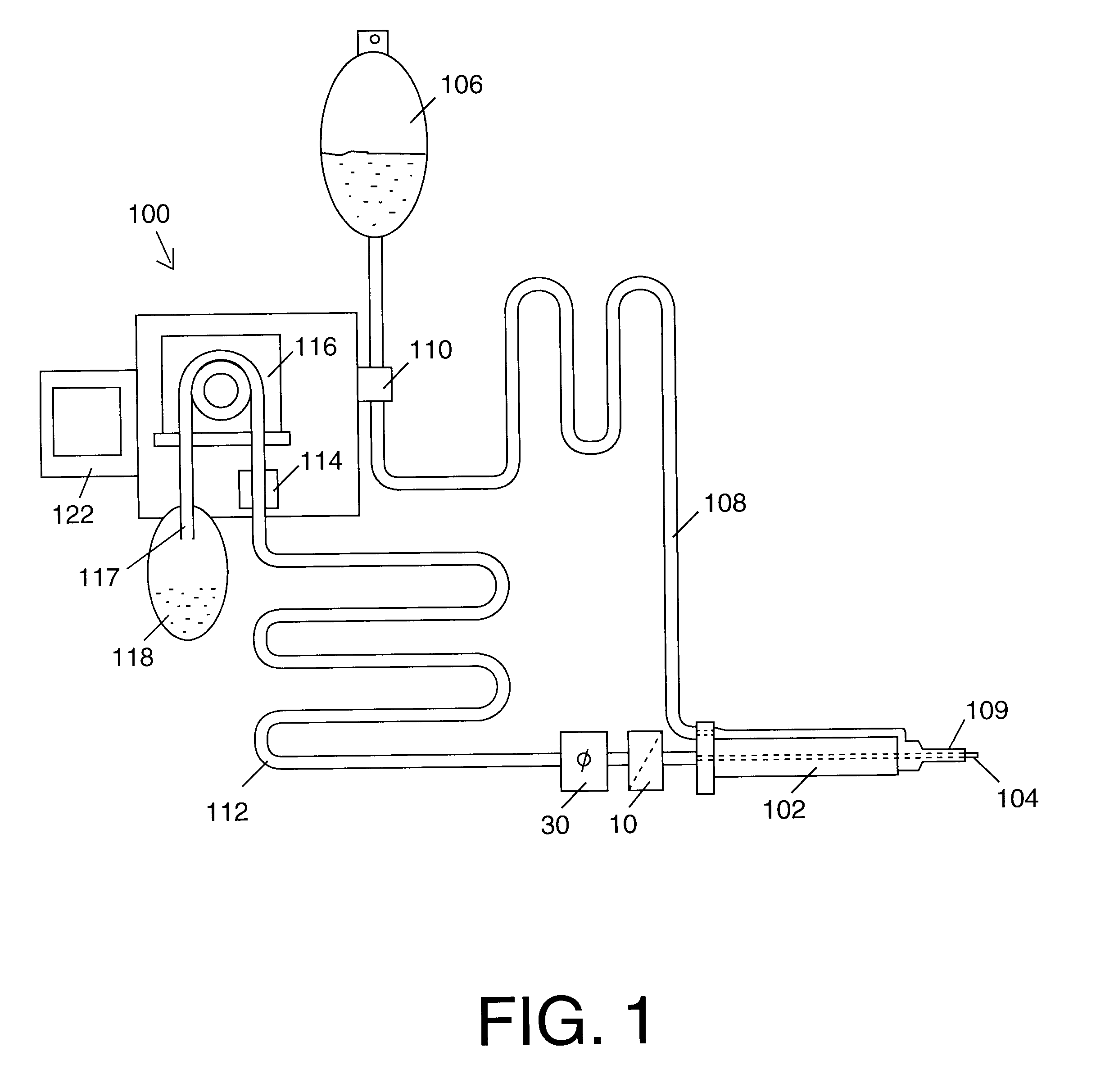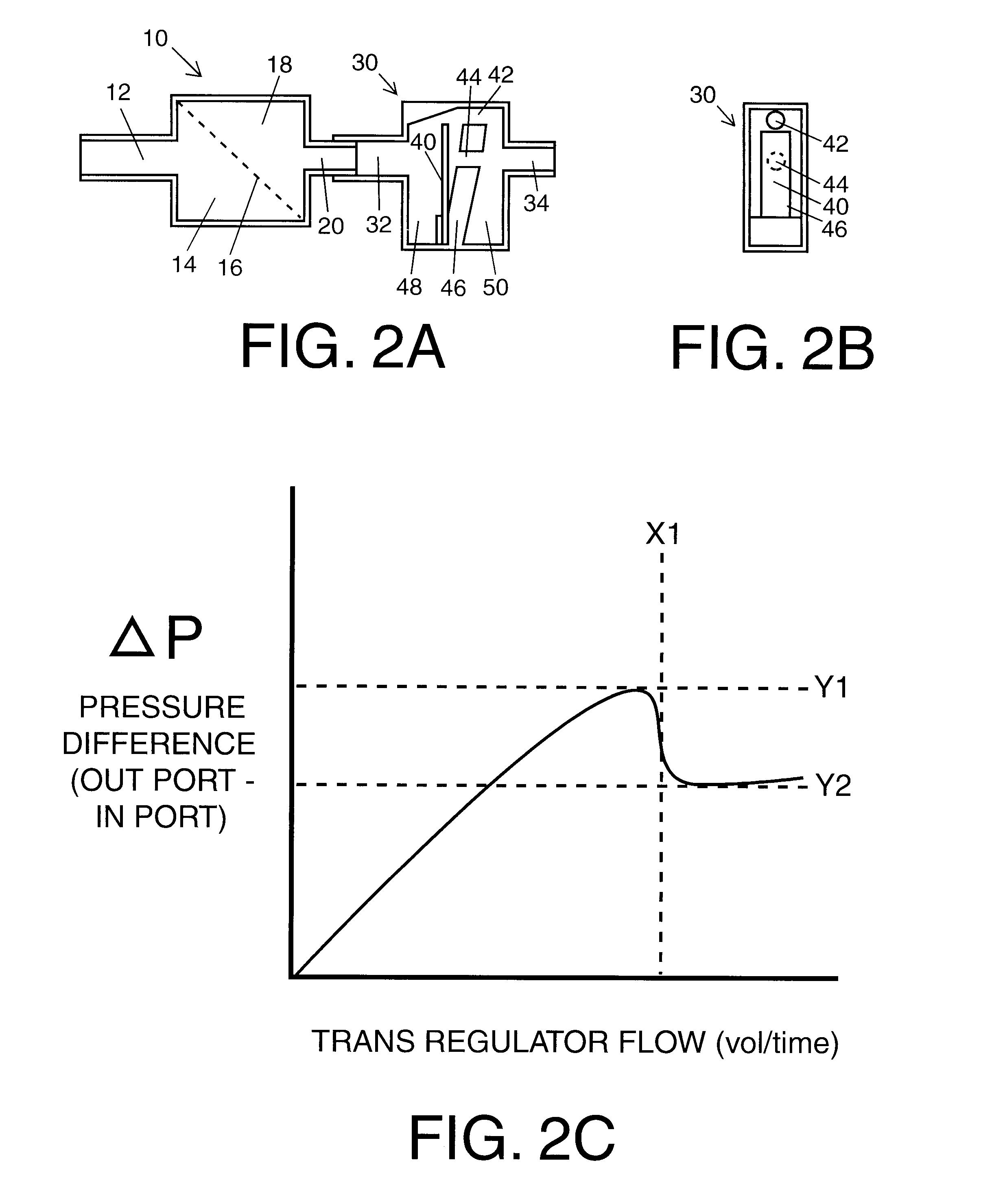Outflow rate regulator
a technology of flow rate and regulator, which is applied in the field of flow rate control system, can solve the problems of affecting the flow rate of ophthalmic surgical equipment, the inability of the irrigation system to fully compensate, and the condition is particularly prone to occur, so as to reduce the fluid passage section, increase the length, and the effect of low resistan
- Summary
- Abstract
- Description
- Claims
- Application Information
AI Technical Summary
Benefits of technology
Problems solved by technology
Method used
Image
Examples
Embodiment Construction
[0027]In FIG. 1, there is shown a phacoemulsification surgical system 100 in which an outflow rate regulator 30 of the present invention may be used to advantage. Surgical system 100 has an infusion bottle 106 connecting through an infusion line 108 to an infusion sleeve 109 to perfuse the anterior chamber of the eye.
[0028]Alternatively line 108 can connect to a secondary port infusion instrument such as an anterior chamber maintainer or irrigating instrument for the same purpose. An infusion line solenoid valve 110 has a clamping action upon infusion line 108. A hollow phacoemulsification needle 104 placed at the distal end of a phacoemulsification hand-piece 102 operates with the distal end placed at the anterior chamber of the eye. Needle 104 is proximally in fluid connection with a solid particle retainer 10 which is in fluid downstream connection with outflow rate regulator 30 of the present invention. The output of outflow rate regulator 30 is in fluid connection with an aspir...
PUM
 Login to View More
Login to View More Abstract
Description
Claims
Application Information
 Login to View More
Login to View More - R&D
- Intellectual Property
- Life Sciences
- Materials
- Tech Scout
- Unparalleled Data Quality
- Higher Quality Content
- 60% Fewer Hallucinations
Browse by: Latest US Patents, China's latest patents, Technical Efficacy Thesaurus, Application Domain, Technology Topic, Popular Technical Reports.
© 2025 PatSnap. All rights reserved.Legal|Privacy policy|Modern Slavery Act Transparency Statement|Sitemap|About US| Contact US: help@patsnap.com



